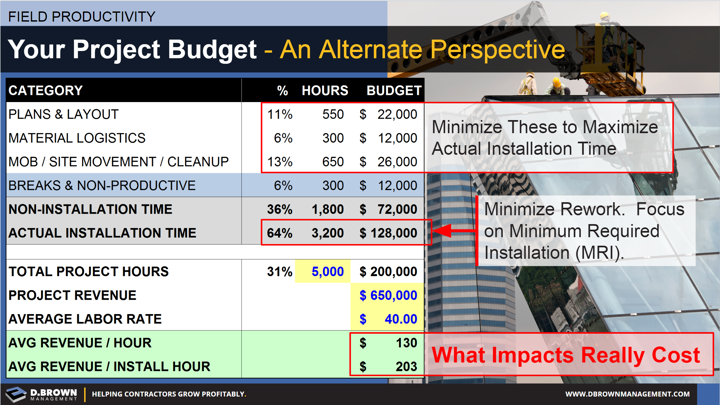It will provide job security and opportunities for every member of the team from the apprentice on the front-line through the senior management.
For most contractors time spent on actual installation is less than 65% of the day. The labor studies that form the foundation for the estimating unit databases we all use provide details for how time is spent in the field.
As contractors focus on creating the “Perfect Day” for their field they must look at every step in their value stream focusing on minimizing all work that does not directly add value to the customer.
Sometimes it is important to backup and look at this non-installation time from the project level rather than seeing it as embedded in every labor unit detail. This perspective allows you to make bigger decisions impacting productivity including:
- Investing more in site logistics
- Investing more in technology and processes improving layout
- Quantifying productivity impacts

